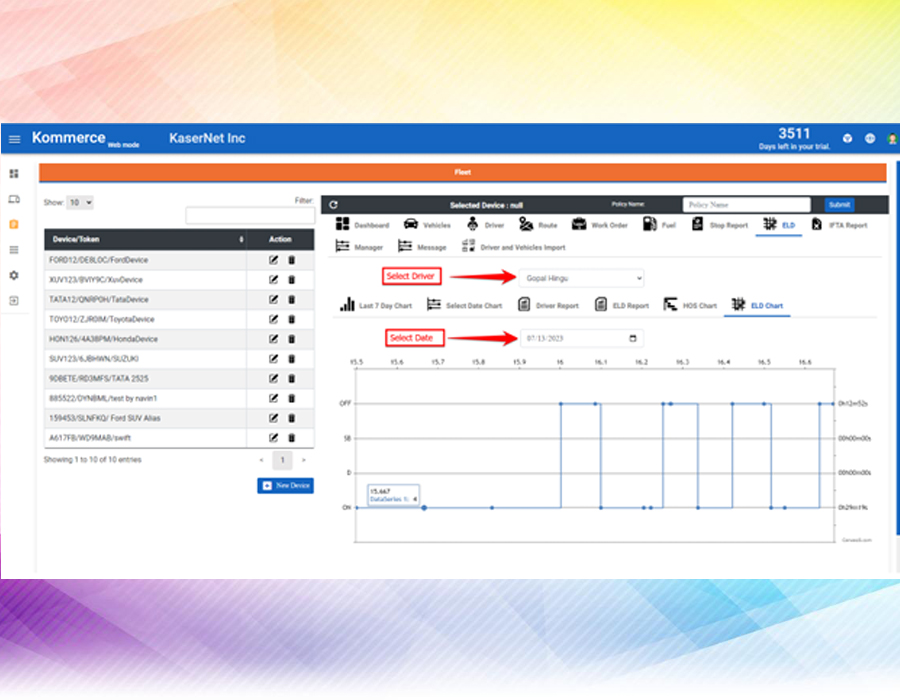Key features of ELDs include
Automated Logging: ELDs automatically record driving time and other HOS data. This eliminates the need for manual paper logs, reducing the risk of errors and fraud.
Accurate Recording: ELDs accurately track a driver’s on-duty and off-duty time, helping to ensure compliance with HOS regulations. They also record the location and time of each change of duty status.
Real-Time Monitoring: ELDs can transmit data in real time, allowing fleet managers to monitor a driver’s status and compliance remotely. This can improve safety and efficiency.
Warnings and Alerts: ELDs can provide alerts to drivers when they are approaching their maximum allowable driving time. This helps prevent violations and promotes safety.

Data Storage: ELDs store records of HOS data, which can be easily accessed and reviewed by both drivers and law enforcement during roadside inspections.
User-Friendly Interface: ELDs typically have a user-friendly interface that makes it easy for drivers to log their activities and for fleet managers to review and analyze the data.
Tamper-Resistant: ELDs are designed to be tamper-resistant to prevent drivers from altering or falsifying records.
Driver Schedules and Regulations:
Driver hours of service: Comply with regulations that limit the number of hours drivers can be on duty and require rest breaks or sleep periods.

Shift rotations: Implement shift schedules or driver rotations to maintain continuous coverage during multi-day routes and prevent driver fatigue.


Main goal of ELDs
The main goal of ELDs is to improve safety on the roads by ensuring that drivers are not exceeding their allowable hours of service, which can lead to driver fatigue and accidents. They also streamline record-keeping processes, reduce paperwork, and help fleet managers optimize routes and schedules.



